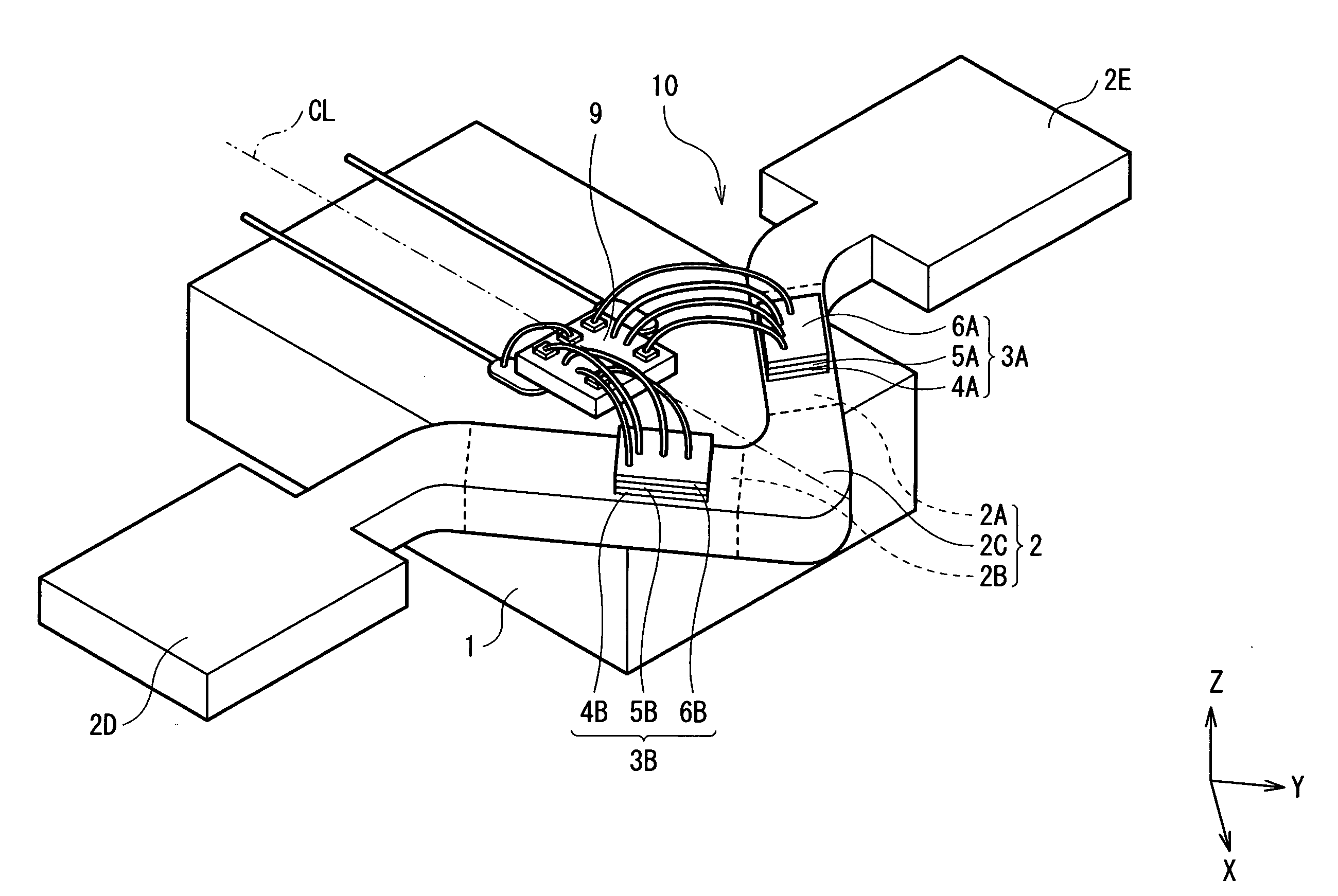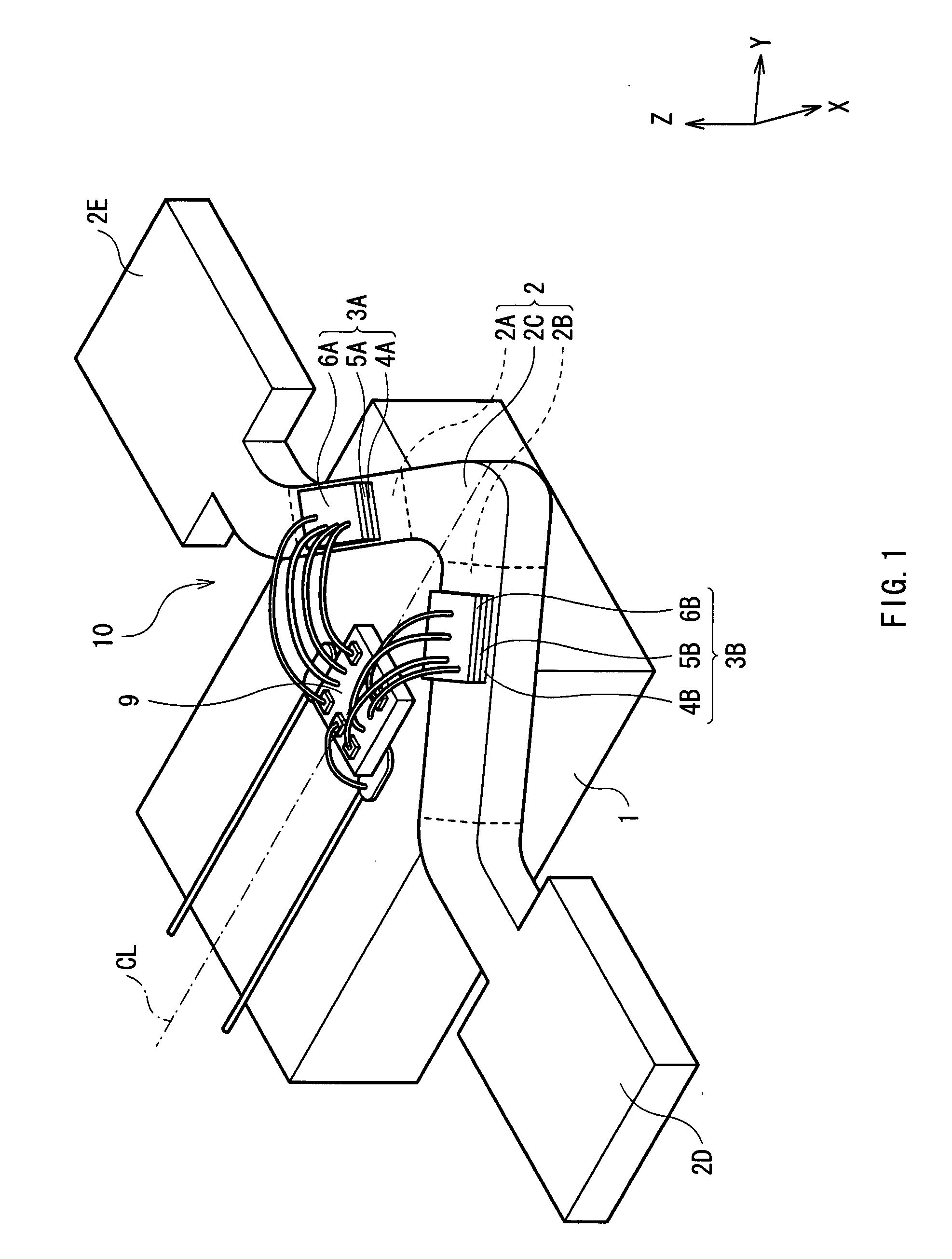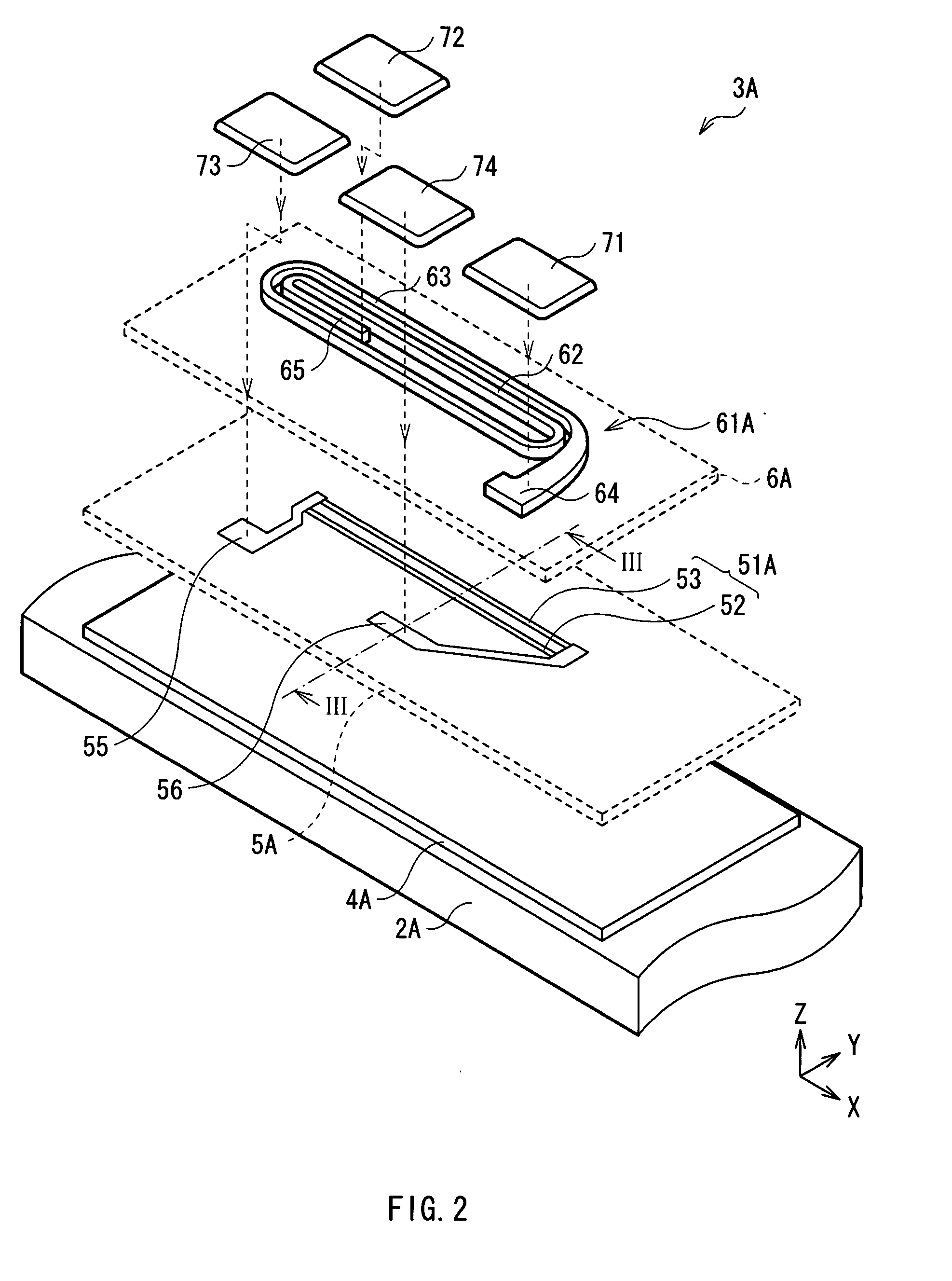Magnetic sensor and current sensor
a current sensor and magnetic sensor technology, applied in the field of magnetic sensors, can solve the problems of increasing the stability of detection sensitivity and responsibility, the influence of external noise, and the inability to adjust the detection sensitivity, so as to improve the stability of detection sensitivity and responsibility, the uniaxial anisotropy of the free layer can be increased more, and the effect of high precision and stability
- Summary
- Abstract
- Description
- Claims
- Application Information
AI Technical Summary
Benefits of technology
Problems solved by technology
Method used
Image
Examples
first embodiment
[0036]First, configuration of a current sensor as a first embodiment of the present invention will be described with reference to FIGS. 1 to 4. FIG. 1 is a schematic diagram showing a perspective configuration of a current sensor 10 according to the present embodiment, and FIG. 2 is an enlarged perspective view showing a magnetic sensor 3A (which will be described later), which is a part of the current sensor 10 of FIG. 1. FIG. 3 is a cross section of the magnetic sensor 3A shown in FIG. 2 taken along line III-III, seen from the direction indicated by the arrows. FIG. 4 illustrates a circuit configuration in the current sensor 10 shown in FIG. 1. Directions of all the arrows shown in FIG. 4, respectively representing a current to be detected Im, a compensation current Id, current magnetic fields Hm, compensation current magnetic fields Hd, bias magnetic fields Hb1 and Hb2, and a current I0, indicate a relative direction with respect to magnetoresistive elements (MR elements) 51A and...
second embodiment
[0068]Next will be explained a current sensor as a second embodiment according to the present invention. Although in the foregoing first embodiment is explained the case in which the conductor 2 of V-shaped configuration (in plan view) is used, in the present embodiment is explained a case where a straight-line shaped conductor 21 is employed.
[0069]The current sensor of the second embodiment has the same configuration as that of the above-mentioned first embodiment substantially except for the conductor 21. Namely, the current sensor of the second embodiment has the structure in which the magnetic substrates 4A and 4B, the MR element layers 5A and 5B including the MR elements 51A and 51B, and the thin film coil layers 6A and 6B are layered in this order on the straight-line-shaped conductor 21 used as a path of the current to be detected Im. Therefore, here is explained a relation of the magnetization directions J11 and J13 of the MR elements 51A and 51B (specifically the element pa...
third embodiment
[0073]Next will be explained a current sensor as a third embodiment according to the third invention. In the first embodiment as described above, the magnetic substrate 4A and the MR element layer 5A including the MR element 51A are disposed on the straight line portion 2A of the conductor 2, and the magnetic substrate 4B and the MR element layer 5B including the MR element 51B are disposed on the straight line portion 2B. In the third embodiment, on the other hand, four MR elements 51A to 51D are disposed on one conductor 2. Explanation will be made hereinbelow with reference to FIG. 8. Since its configuration is substantially similar to that of the above-mentioned first embodiment except for the point that the four MR elements 51A to 51D are disposed, descriptions will be omitted suitably according to circumstances.
[0074]FIG. 8 is a conceptual diagram showing a relation of current direction, magnetic field directions, and magnetization directions according to a current sensor of t...
PUM
| Property | Measurement | Unit |
|---|---|---|
| current | aaaaa | aaaaa |
| angle | aaaaa | aaaaa |
| thickness | aaaaa | aaaaa |
Abstract
Description
Claims
Application Information
 Login to View More
Login to View More - R&D
- Intellectual Property
- Life Sciences
- Materials
- Tech Scout
- Unparalleled Data Quality
- Higher Quality Content
- 60% Fewer Hallucinations
Browse by: Latest US Patents, China's latest patents, Technical Efficacy Thesaurus, Application Domain, Technology Topic, Popular Technical Reports.
© 2025 PatSnap. All rights reserved.Legal|Privacy policy|Modern Slavery Act Transparency Statement|Sitemap|About US| Contact US: help@patsnap.com



